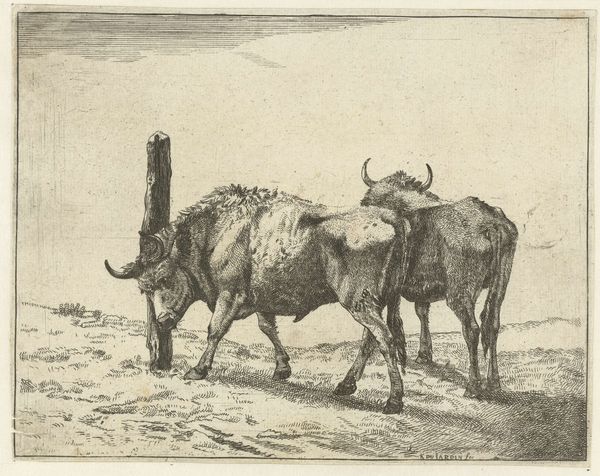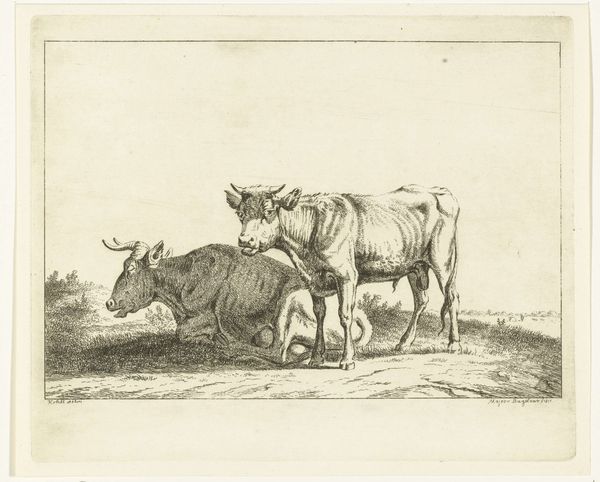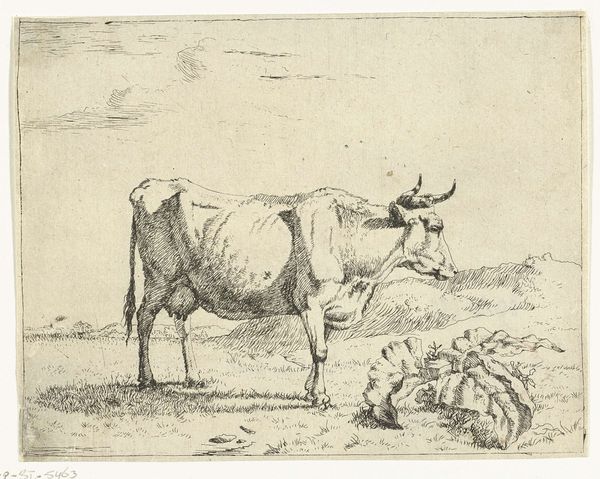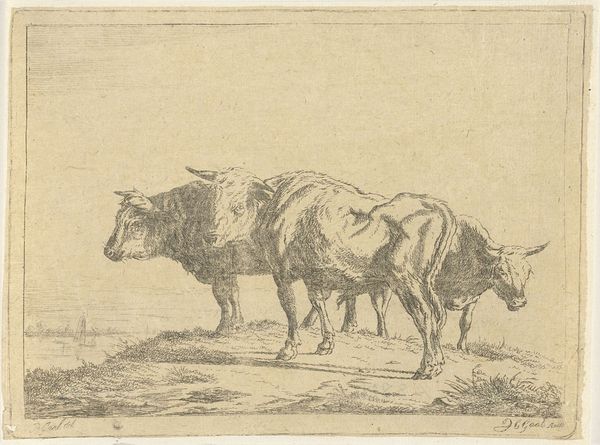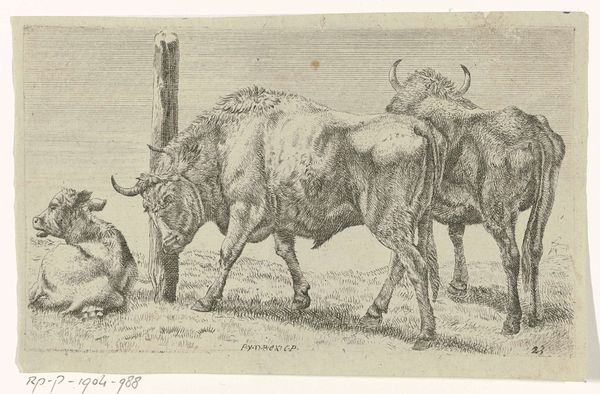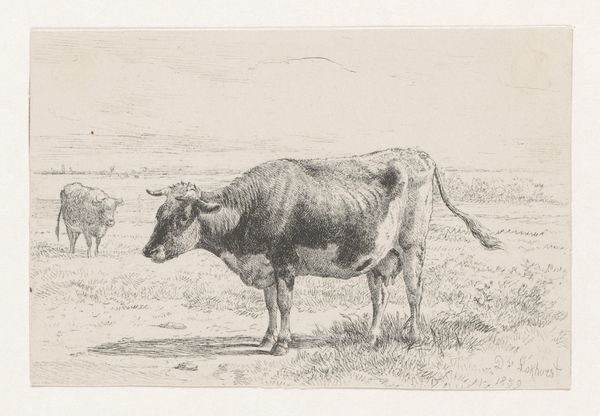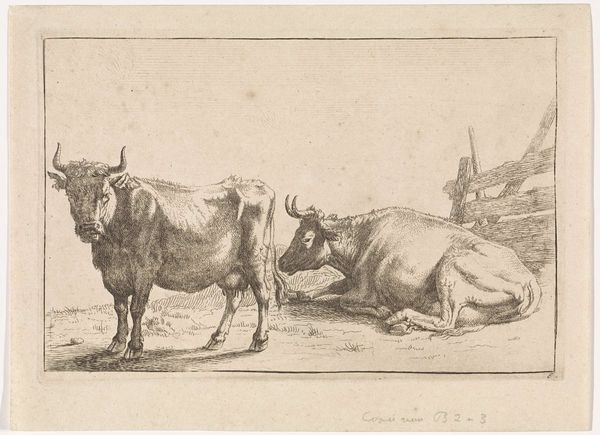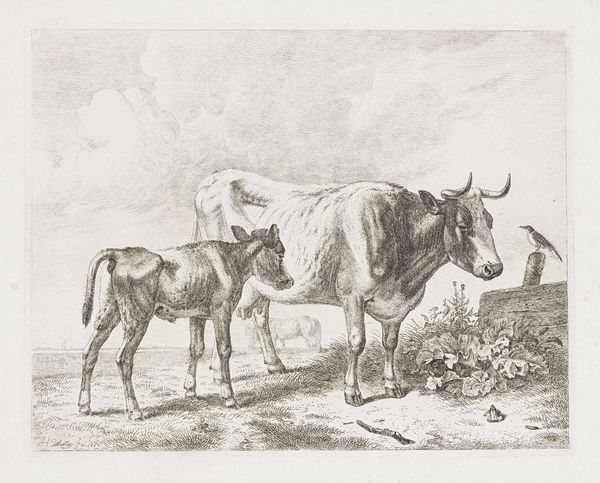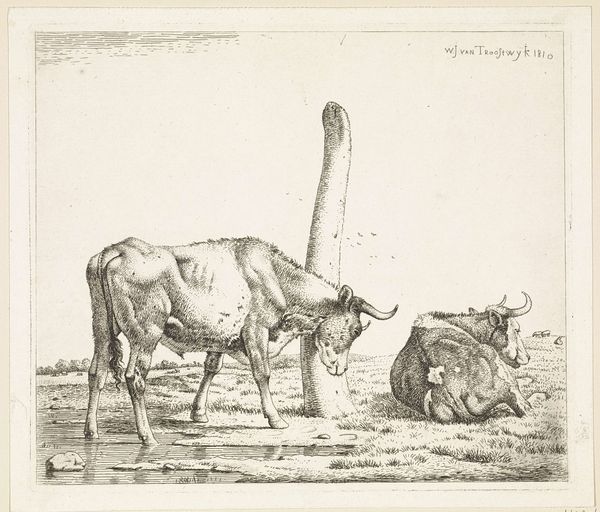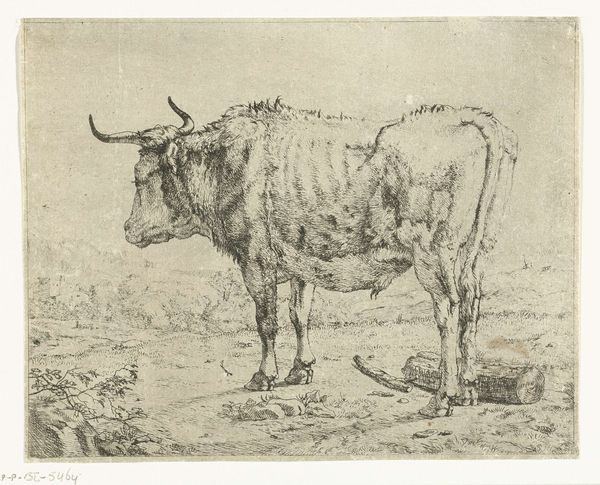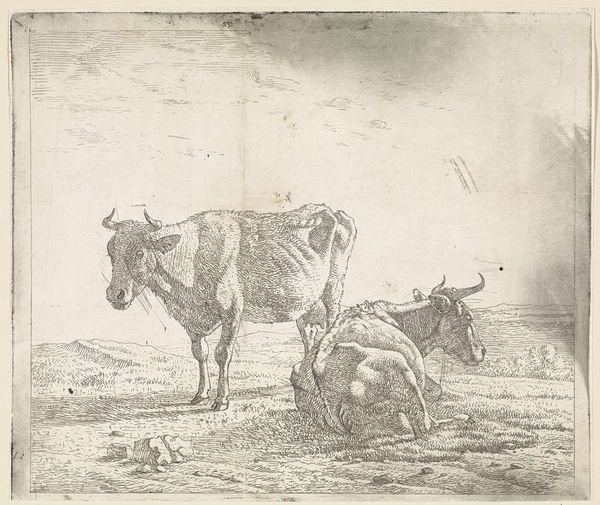
drawing, etching
#
drawing
#
baroque
#
animal
#
pen sketch
#
etching
#
pencil sketch
#
landscape
#
realism
Dimensions: height 155 mm, width 182 mm
Copyright: Rijks Museum: Open Domain
Karel du Jardin created this print, “Two Oxen,” using etching, sometime around 1655. Look closely, and you’ll notice the intricate detail achieved through this intaglio process. The artist would have coated a metal plate with wax, drawn his design, and then submerged the plate in acid. The acid bites into the exposed lines, which then hold ink and transfer the image to paper. Du Jardin masterfully uses this technique to depict the oxen's textures, from their thick hides to the roughness of the wooden post. The scene offers a glimpse into the rural life of the Dutch Golden Age, where agriculture was a cornerstone of the economy. By focusing on these working animals, Du Jardin subtly highlights the labor and industry that underpinned the era's prosperity. It’s a celebration of the everyday, elevated through skilled craftsmanship. This reminds us that art isn't just about grand subjects; it's about seeing the value and beauty in the ordinary.
Comments
No comments
Be the first to comment and join the conversation on the ultimate creative platform.
